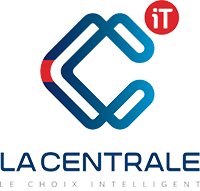Change is paramount for banks and credit unions attempting to stay current in today’s ever-evolving landscape, including technological advancements, shifts in consumer behavior, economic fluctuations, and competitive pressures.
Embracing meaningful change and flexibility can set you up for success in many areas:
- Market relevance
- Risk mitigation
- Customer satisfaction
- Partnerships and collaboration
- Future-proofing your business
- Talent attraction and retention
- Gaining a competitive advantage
- Innovation and modernization
As Heraclitus puts it, “change is the only constant”, and now embracing change is no longer optional – it’s a must. Banks and credit unions that proactively embrace meaningful change are better equipped to navigate the modern-day business landscape and position themselves for long-term success.

This was the topic of discussion during our recent webinar, A Framework for Change: The First Step and Beyond with Tower Community Bank and The Financial Brand. Mike Hughes, VP of Product Marketing at FintechOS, interviewed Brett Hollenbeck, Virtual Bank Director at Tower Community Bank, on his role designated to bringing meaningful change into the bank.
Below are a few highlights of their discussion.
Why Does Change Matter?
Integrating meaningful change is difficult for any organization, but especially for traditional banks and credit unions dealing with obstacles like outdated processes and existing legacy systems. 95% of incumbent banks say they are still hindered by legacy systems and most struggle to attract and retain top tech talent.
This directly affects the customer experience, with most customers agreeing that their banks don’t integrate well into their lifestyles. So, it’s time for banks and credit unions to look onwards – towards a more innovative future – by identifying new profit pools, channels of distribution, and ways to automate and streamline back-office processes.
But before you can drive change at your financial institution, consider if your bank or credit union is ready to take the leap.
How to Get Started with Meaningful Change
Fintech expert, Ron Shevlin, recently claimed that innovation as a management fad is dying. Why? Not because innovation is in any way bad, but because organizations aren’t ready for disruptive innovation.
Shevlin says, “successful innovation requires a supportive infrastructure, culture that embraces experimentation and failure, and an organization-wide commitment to change”. He stresses that most companies don’t have these key factors in place yet are surprised when miracles don’t happen overnight.
The success of innovation heavily relies on an organization’s ability, and willingness, to change.
Tower Community Bank Embraces Meaningful Change
Nashville-based institution, Tower Community Bank, was ready to embrace meaningful change that would differentiate them further in their current market. While they came from traditional roots, they were forward-thinking and wanted to be on the front edge of trying new tools and technologies.
They set their sights on improving their current customer experience, attracting new customers in the community, and generating additional revenue sources. To accomplish this, the bank hired change and process management expert, Brett Hollenbeck, MBA, to lead digital innovation and provide the bank with a fresh set of eyes.
Here’s Brett Hollenbeck’s guide to embracing change:
- Designate a Change Agent – A change agent, in this case Hollenbeck, is someone who will lead the change and innovation happening organization-wide. This person plays an instrumental role in getting everyone on board, identifying key areas to initiate meaningful change, keeping timelines on track and individuals accountable, and later acting as a liaison between the bank and their chosen technology provider.
- Idea Generation – This is the brainstorming process. The change agent needs to take the time to identify the bank’s future goals and strategic vision, as well as launch discussions with people throughout the organization to gain feedback on first thoughts and potential obstacles. This is the time to dig deeper and disregard “this is just the way we do it” as an answer. Question how things have been done and make sure current investments are truly valuable to the customer.
- Identify Opportunities – Identify what the financial institution is already doing well and how you can take a different approach to the problems you’ve been seeing for a while. Ask customers and clients what they like about your business, why they’ve chosen to invest in you, and what their main pain points are. You can’t be everything to everyone, so really home in on what’s working best.
- Balance Priorities – With so many great ideas in mind and projects in development, it can be tough to juggle it all. Especially when each internal department has its own priorities. Make sure the person calling the shots (the change agent, CEO, or other organizational leader) is prioritizing the things that will make the “biggest splash”. The prioritized investments should be those most meaningful to your customers.
- Overcome Challenges – There will be many obstacles in the way of change and innovation, including compliance, regulations, and budget. Overcoming these challenges requires careful planning, effective communication, an adaptable culture, and strong leadership.
Embracing meaningful change is difficult for every organization, but it is much easier for those who can get their team on board to execute a well-researched plan.
Putting Meaningful Change into Action
For most financial institutions, especially local banks and credit unions, large technology innovation projects are handled by a technology vendor or fintech provider. Often, internal IT teams don’t have the skills, numbers, or resources to implement new tools and technologies, especially if they’re already battling existing legacy systems.
When it comes to evaluating and choosing a new tech vendor, be on the lookout for red flags. A good vendor will have the following things in place:
- A flexible and highly-customizable product – This makes handling changes in the market a breeze instead of being forced to start back at square one.
- Constant communication – Problems are bound to arise but maintaining an open dialog builds trust on both sides.
- Customer-focused – You want a partner who knows your industry and has experience implementing the products your customers want.
- Clear and measurable timelines – set from the start, keeping both parties accountable and aware of expectations.
- Aligned values – Get to know how the organization operates, the people you’ll be working with closest, and how they perform under stress.
- Previous customers speak highly about their deliverables – Don’t hesitate to gather unbiased feedback.
Lastly, make sure your chosen tech provider can enable you to launch new products and services quickly, so you don’t miss out on capturing competitive market share as opportunities arise.
Conclusion: Embracing Meaningful Change is a Marathon not a Sprint
Embracing meaningful change is a journey that requires commitment, vision, and adaptability. Financial institutions that choose to proactively navigate this path are better positioning themselves for long-term success as they remain relevant and resilient in today’s ever-changing financial landscape.
Via: https://fintechos.com/






